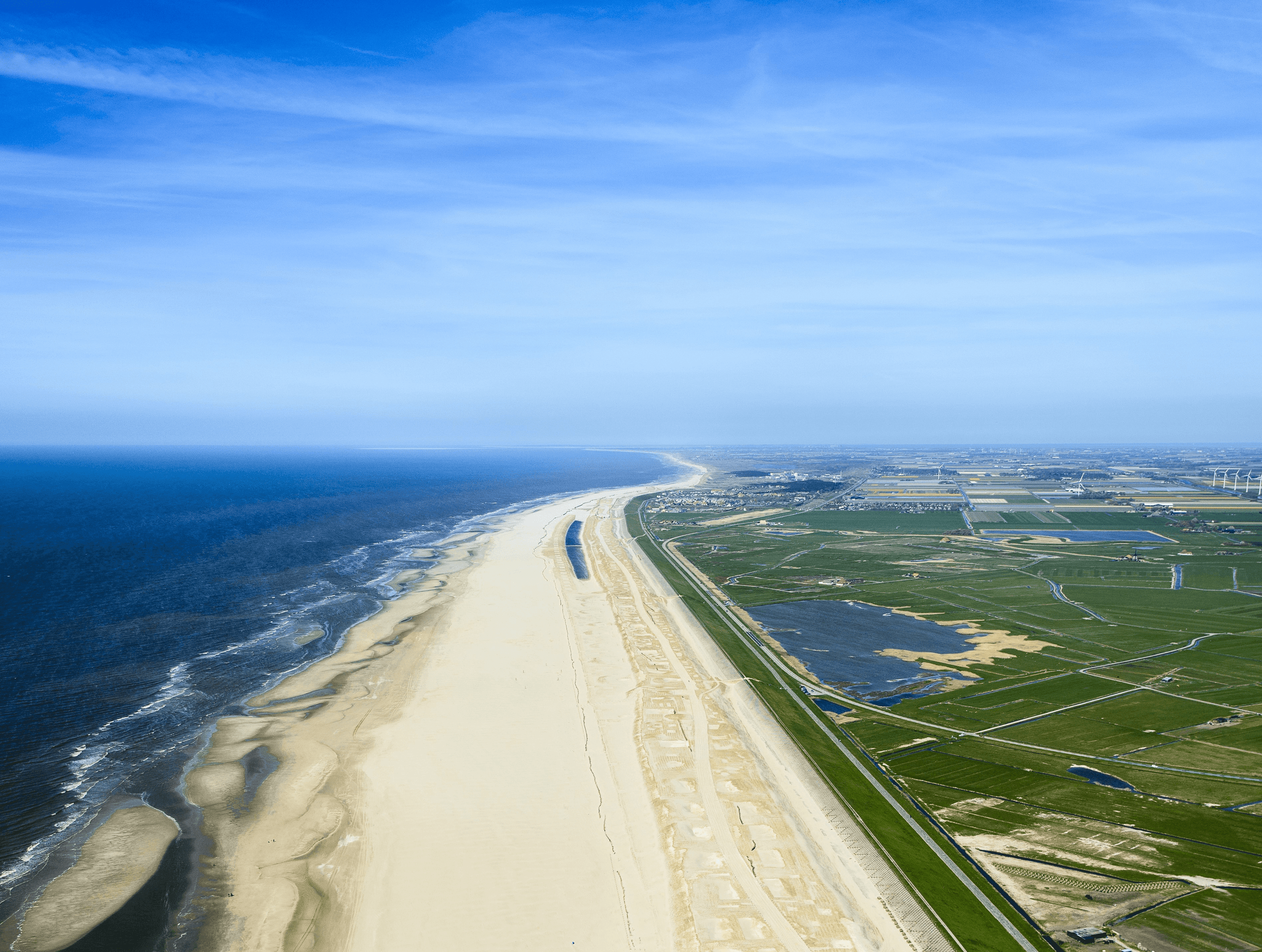In 2019, the State of the Netherlands was the first country with a triple-A rating to issue a Green Bond (DSL). On 17 October 2023, the Netherlands issued a new 20-year Green DSL.
Green Bonds are bonds of which the proceeds will be allocated to green, or climate-related, expenditures and investments. By issuing the Green Bond, the Netherlands aims to further enhance and support the establishment of a robust green capital market.
On 17 October 2023, the DSTA issued a new Green 20-year DSL, with an issuance volume of €4.98 billion. Subsequently, this Green DSL was re-opened in 2024 and 2025. Currently, the outstanding amount of Green DSLs is nearly €27 billion.
Image: Outlook 2023
The Houtribdijk functions as a storm buffer between the IJsselmeer and the Markermeer, and creates a wetland nature reserve 370 hectares in size. The construction of Dutch Delta Fund infrastructure such as this dike was partially financed through Green Bonds.
Green Bond Framework
As is common practice with a Green Bond, an independent expert has assessed the Dutch Green Bond. For the green bond in 2023, the DSTA updated the Green Bond Framework in order to ensure it is aligned with the new EU Taxonomy.
On 8 September 2023, the updated Green Bond Framework was published, with a particular focus on water investments such as the Dutch Delta Fund (“blue expenditures”). The expenditures for these specific investments have been mapped against the amendments to the EU Taxonomy which were released this June. Of all twelve eligible economic activities in the Framework, eleven meet all of the required technical screening criteria, while all economic activities meet the substantial contribution criteria. The Green DSL 2044 is the first triple-A sovereign issuance to have “blue” activities fully mapped to the EU Taxonomy.
The Green DSL 2044 covers all expenditures outlined in the Green Bond Framework, fulfilling the substantial contribution criteria of the EU Taxonomy as a minimum. As the new additions to the EU Taxonomy contain –amongst others- criteria for Flood risk prevention and Nature-based solutions for flood risk prevention, the DSTA was able to fully map the Delta Fund expenditures against Taxonomy criteria. By aligning this Framework to these latest additions, the Netherlands emphasises its commitments to protect its citizens.
In addition to the “blue expenditures” also expenditures related to renewable energy, energy efficiency and clean transportation are covered under the Green Bond Framework.
Second Party Opinion obtained from Moody’s
The DSTA appointed Moody’s for an external review of the Green Bond Framework. The Second Party Opinion provided by Moody’s assigns a Sustainable Quality Score of “Excellent” (SQS 1) to the Framework and considers it to be aligned with the four core components of the Green Bond Principles. The most recent assessment by Moody’s in this respect was issued on 28 May 2025.
According to Moody’s, the Framework demonstrates a high overall contribution to sustainability. In addition, based upon information provided by the DSTA, Moody’s considers eleven out of the twelve economic activities to adhere to all EU taxonomy criteria relating to both substantial contribution and do-no-significant-harm (DNSH). For the economic activity where this was not fully possible, it is considered that all criteria are adhered to the EU taxonomy, except for the pollution prevention and control DNSH criterion.
Please refer to the full second party opinion report for further details as well as a description of the methodology used.
